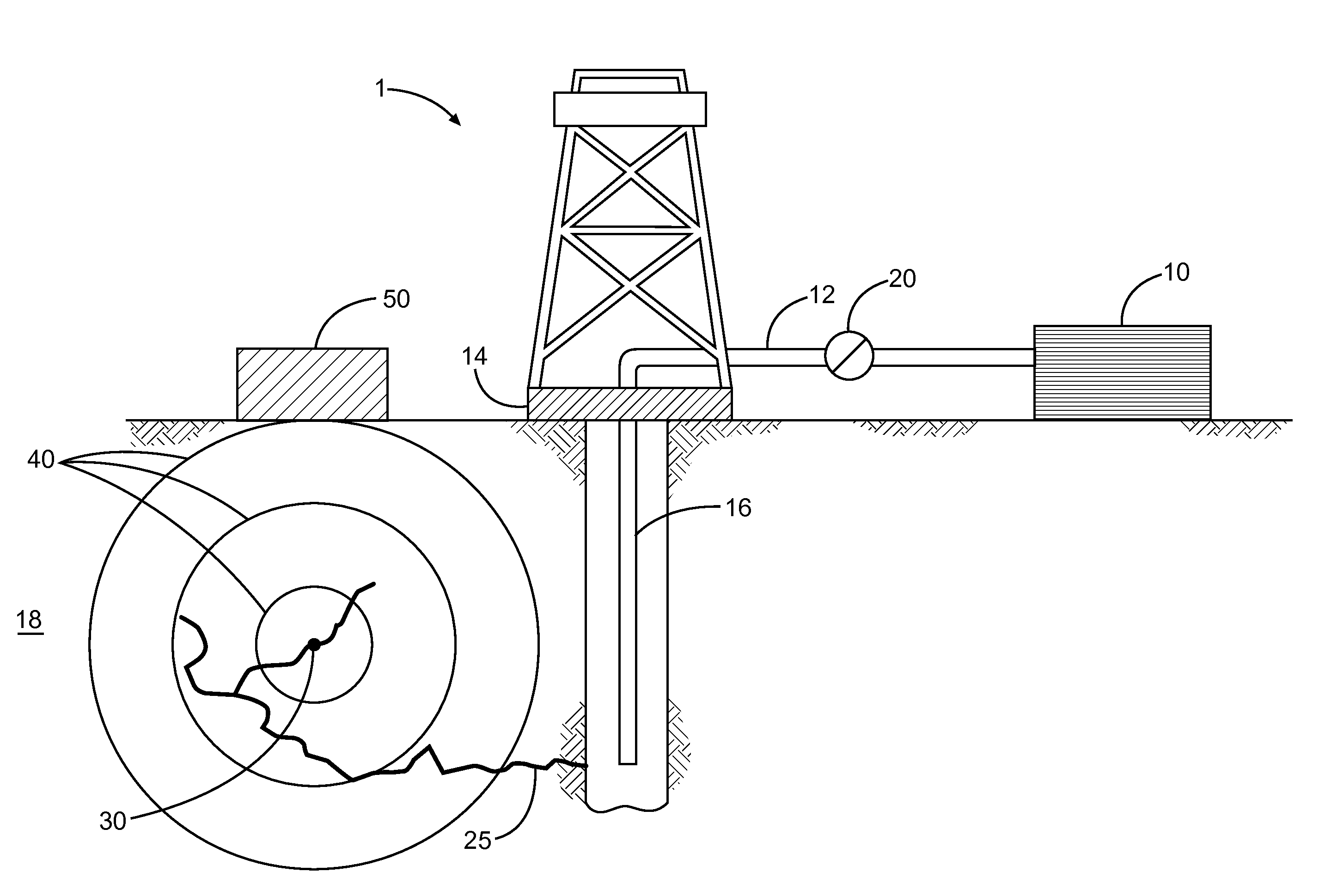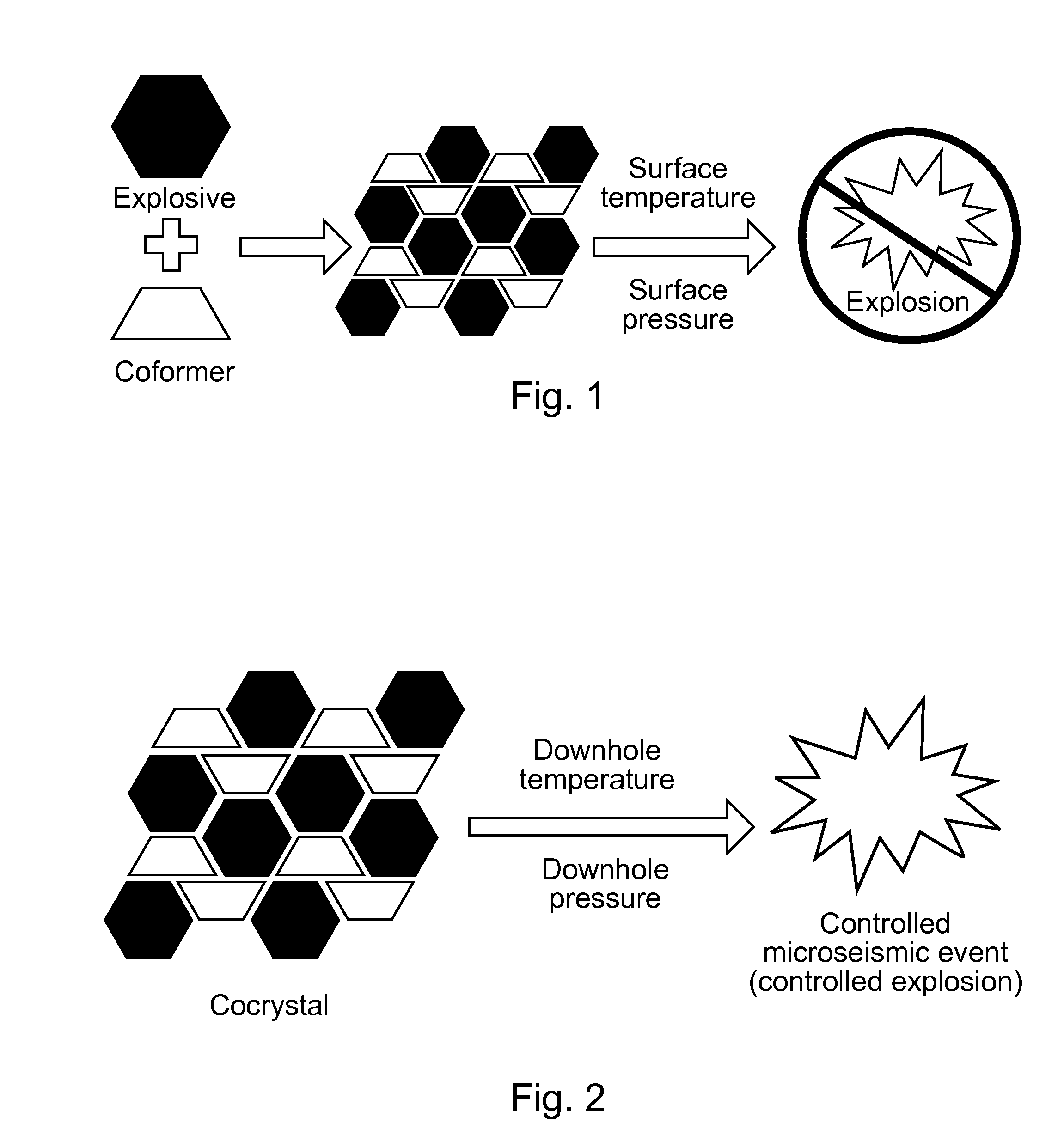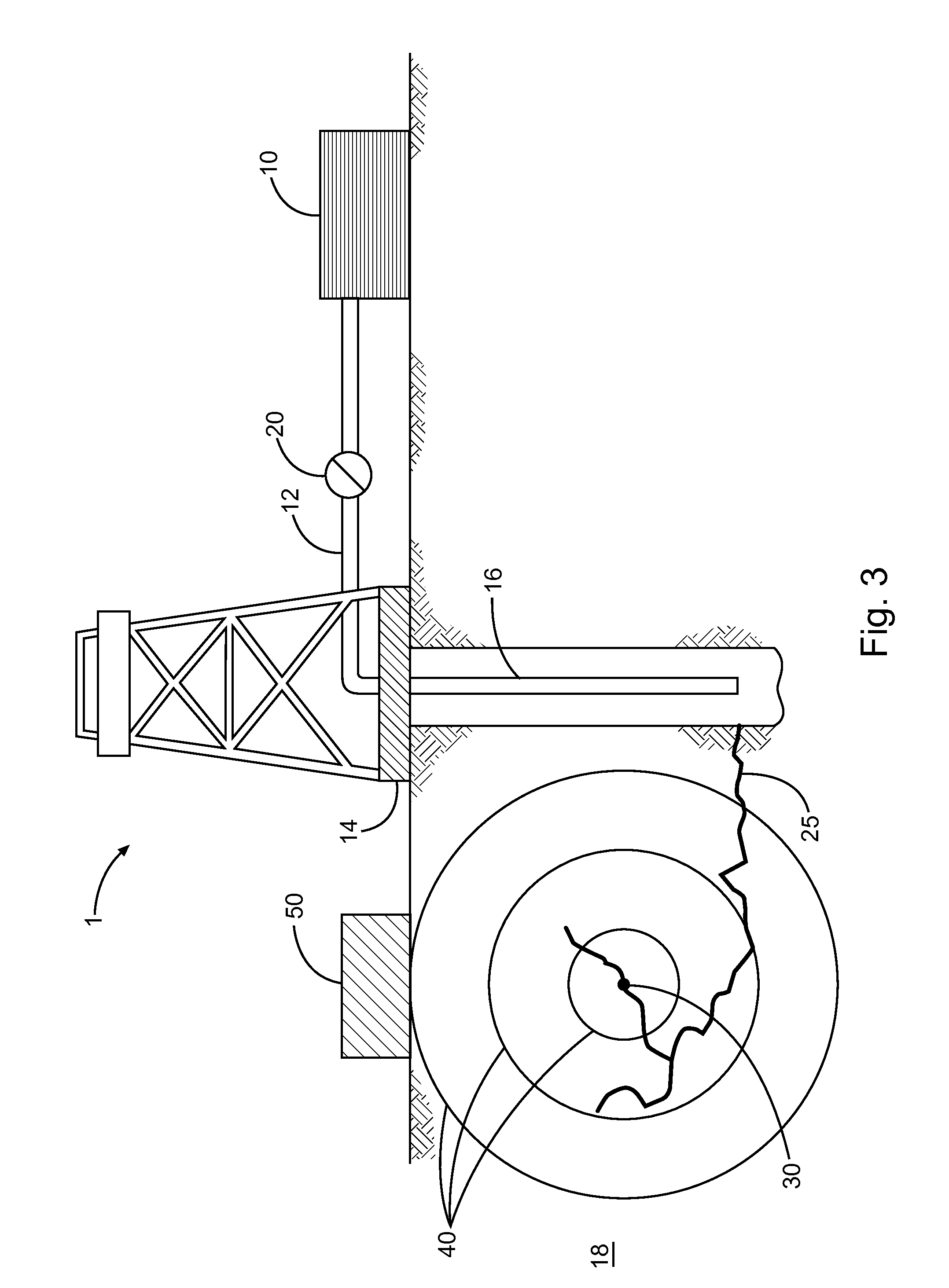Energetic cocrystals for treatment of a subterranean formation
a technology of energetic materials and subterranean formations, which is applied in the direction of exploration, well accessories, and survey of wells, etc., can solve the problems of limited data regarding fracture geometry, including length, height, width, and overall pattern of fractures, and limit the ability to use various energetic materials downhole in subterranean extraction operations safely and effectively. , to achieve the effect of safe and reliable deposited, safe handling and improved efficiency
- Summary
- Abstract
- Description
- Claims
- Application Information
AI Technical Summary
Benefits of technology
Problems solved by technology
Method used
Image
Examples
example 1
Cocrystals of octahydro-1,3,5,7-tetranitro-1,3,5,7-tetrazocine (HMX) and 1,4-piperazinedicarboxaldehyde (1:1), HMX and N-methyl-2-pyrrolidone, HMX and 2-bromoaniline (1:1), HMX and 2-picoline-N-oxide (1:2), HMX and 4-picolene-N-oxide (1:1), HMX and thieno[3,2-b]thiophene (1:1), HMX and 1,2-phenylenediamine (1:1), HMX and 2-pyrrolidone (1:1), HMX and 3,4-diaminotoluene (1:1), HMX and 4-fluoroaniline (1:1)
[0170]2-Bromoaniline (98%), 2-pyrrolidone (98%), 1,4-piperazinedicarboxaldehyde (98%), and 2-picoline-N-oxide (98%) were obtained from Acros Organics (New Jersey, USA). 1,2-Phenylenediamine (99.5%), 3,4-diaminotoluene (97%), and 4-picoline-N-oxide (98%) were obtained from Aldrich, (St. Louis, Mo.). 4-Fluoroaniline (98%) was obtained from Aldrich (Milwaukee, Wis.). N,N-Dimethylformamide (Synthesis, Fisher BioReagent) and N-methyl-2-pyrrolidone (Fisher BioReagents) were obtained from Fisher Scientific. Thieno[3,2-b]thiophene was synthesized and purified according to the published proce...
example 2
Cocrystals of octahydro-1,3,5,7-tetranitro-1,3,5,7-tetrazocine (HMX) and 2,4,6,8,10,12-hexanitro-2,4,6,8,10,12-hexaazaisowurtzitane (CL-20) (1:2)
[0172]Energetic compounds 2,4,6,8,10,12-hexanitro-2,4,6,8,10,12-hexaazaisowurtzitane (CL-20) and 1,3,5,7-tetranitro-1,3,5,7-tetrazacyclooctane (HMX) were received from the Naval Surface Warfare Center at Indian Head.
[0173]A glass vial was loaded with 2.19 mg of CL-20 (5.0 μmol), 0.74 mg of HMX (2.5 μmol) and 1 mL of 2-propanol, which had been first dried over 3A molecular sieves. Sonication and mild heating were used to completely dissolve all solids. The solution was passed through a 0.45 μm PTFE filter into a clean glass vial and the solvent was allowed to evaporate from a loosely capped vial at 23° C. over several days. Colorless plates of the 2:1 CL20:HMX cocrystal were formed, though with approximately 10-15% (estimated visually) β-HMX and β / ε-CL20 also present. Concomitant growth of pure component crystals occurred frequently when 2 w...
example 3
Cocrystals of 2,4,6-trinitrotoluene (TNT) and naphthalene (1:1), TNT and anthracene (1:1), TNT and 9-bromoanthracene (1:1), TNT and phenanthrene (1:1), TNT and tetrathiafulvalene (1:1), TNT and thieno[3,2-b]thiophene (1:1), TNT and phenothiazine (1:1), TNT and dibenzothiophene (1:1), TNT and 4,6-dimethyldibenzothiophene (1:1), TNT and 1,2-phenylenediamine (1:1), TNT and 1,4-dimethyoxybenzene (1:1), TNT and 4-aminobenzoic acid (1:1 or 1:2), and TNT and anthranilic acid (1:1 or 1:2)
[0175]Naphthalene (98%), anthracene (99%), 9-bromoanthracene (94%), phenanthrene (98+%), dibenzothiophene (98%), 2-amino-4,5-dimethoxybenzoic acid (98%) and perylene (99%) were obtained from Aldrich (Milwaukee, Wis.). Tetrathiafulvalene (97%), 4,6-dimethyldibenzothiophene (97%), 1,4-dimethoxybenzene (99%) and 1,2-phenylenediamine (99.5%) were obtained from Aldrich, (St. Louis, Mo.). Phenothiazine and 1-bromonaphthalene (97%) were obtained from Sigma (St. Louis, Mo.). Anthranilic acid (puriss, >99.5%) was ob...
PUM
| Property | Measurement | Unit |
|---|---|---|
| mole ratio | aaaaa | aaaaa |
| mole ratio | aaaaa | aaaaa |
| mole ratio | aaaaa | aaaaa |
Abstract
Description
Claims
Application Information
 Login to View More
Login to View More - R&D
- Intellectual Property
- Life Sciences
- Materials
- Tech Scout
- Unparalleled Data Quality
- Higher Quality Content
- 60% Fewer Hallucinations
Browse by: Latest US Patents, China's latest patents, Technical Efficacy Thesaurus, Application Domain, Technology Topic, Popular Technical Reports.
© 2025 PatSnap. All rights reserved.Legal|Privacy policy|Modern Slavery Act Transparency Statement|Sitemap|About US| Contact US: help@patsnap.com



